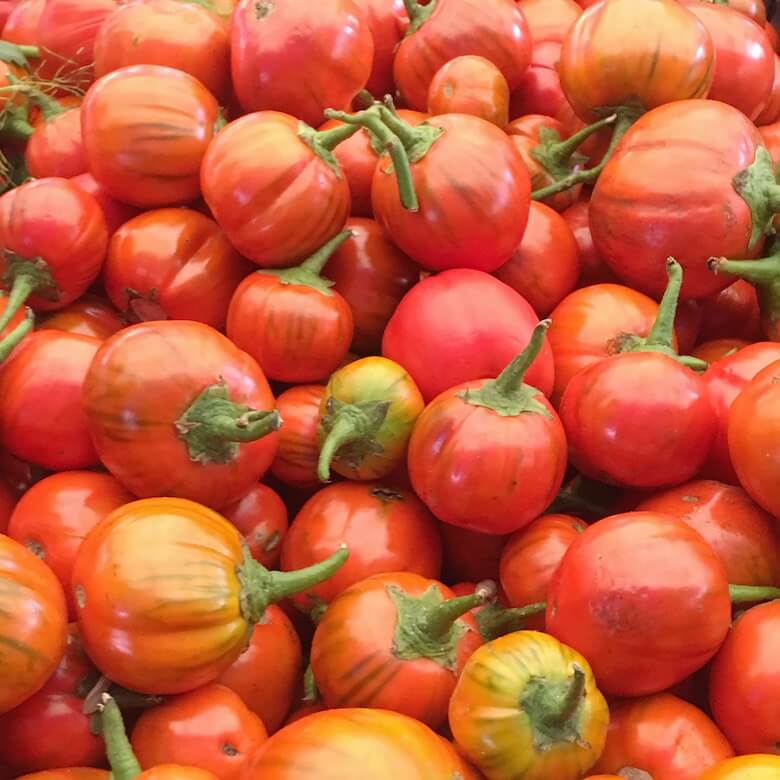
Tipping the Bar is our new column on cocktails from bartender-slash-writer Seánan Forbes. Join the Collective to get invites to our industry events.
Pickles don’t have to be intimidating, time-consuming or made only for hamburgers. Quick pickling can raise your garnish game, impress your patrons and reveal a new spectrum of cocktail-refining flavors.
Step one: look away from the bar. You know the bar. Steal ideas and techniques from the kitchen.
Now is an excellent time to start, with a fruit that everyone links with drinks. Mike Anthony, executive chef of Gramercy Tavern, says, “This time of year, cherries are a no-brainer.” He salts them, lets them sit, rinses them and covers them with pickling liquid that includes bourbon.
Expand your produce horizons. Anthony suggests going to Norwich Meadows Farm‘s stand at the Union Square Farmers Market. The cucumbers are revelatory: large, small, rippled, wrinkled, smooth, dark…It’s hard not to think “pickles,” even before spotting the radishes, turnips and midnight dark string beans.
Adapt an easy technique from David Chang. Split slices of radish two-thirds of the way through (the better to fit on the edge of a glass) and coat them in equal parts salt and sugar. Ten minutes later, you’ll have a simple, yet complex garnish.
Go deeply savory with misozuke: miso pickling. Add what suits you: garlic, ginger, herbs, mirin, sake, dry sherry. Coat the vegetables, cover them and leave them for anywhere from half an hour to overnight.
Intensely flavored, Norwich Meadows’ red ruffled eggplant—tiny eggplants that could be mistaken for zebra cherry tomatoes—pair well with miso and look striking on a drink.
The Gramercy Tavern Cookbook has a basic pickling page, plus recipes with eleven fruits and vegetables. Anthony’s quick to point out that some of his pickles are parts of other recipes, but that’s an asset. For a bartender, the book’s greatest strength may be expanding your sense of possibilities.
Anthony preserves fresh produce all year long. “It only enhances the menu as a whole, or even just your drink, connecting with the season around us.” A beat later, he adds, “I get it. Bar programs have been built on loyalty to brands and their consistency of flavor.” At Gramercy, Anthony remarks, “People have fallen in love with, not necessarily with the dishes or drinks that we’ve made, but the way in which we make them.”
As to bars beyond his Tavern doors, he says, “I like the idea that we would be celebrating local, seasonal food through drinks that are made and enhanced by these pickles.”
Let the pickling process inspire you. Quick-pickled grapes might tempt you to try a new vermouth in a grape-garnished Gibson spin. Muddled, pickled onions could add sweetness and tartness to a cocktail you’re creating. Play with wasabi and tamari in a Bloody Mary. Drizzle a few drops of toasted sesame oil across the surface, boost that flavor with freshly ground black sesame rim and bridge the glass with a skewer of miso-brined vegetables. From the farmers’ market to Japan to a New York City bar—a seasonal journey, quick and easy as brine.



